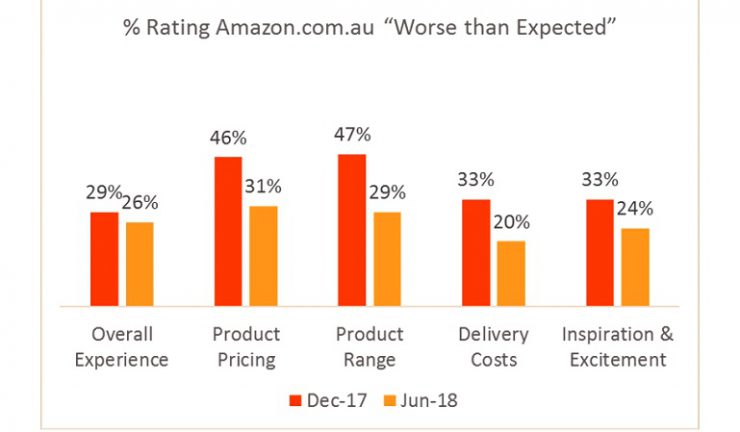As customer expectation gap closes.
Despite Amazon marking its Australian debut as its ‘most successful international launch ever’, many Australian consumers were left feeling disappointed and its impact on the retail industry fell below expectations.
However, Amazon has narrowed the expectation gap for consumers in product pricing, product range and delivery costs in the six months to date, according to Starcom research.
There are now 60 million products available, compared to 22 million products at launch, First Party Stock is 17% cheaper on average relative to retailers and with Prime and two business day delivery is now available to nearly 90% of Australians.
Starcom believes Amazon Prime will be the true accelerant to growth for Amazon in Australia because members spend 4.6 times more than non-Prime members, buy 3 times more frequently and feel that Amazon treats them like a valued customer.

Further, 52% of Amazon Australia site visitors say they are likely to join Prime and online searches for Amazon Prime were three times higher than for eBay Plus, despite eBay site visits being 1.5 times higher in May 2018.
Following the launch of Prime, Amazon’s app went from being the 9th to the 6th most downloaded shopping app in Australia.
Starcom director of audience and measurement solutions, Nicole Conroy said Amazon’s free and fast delivery proposition is core and essential for long term Prime membership. “It is also the bursts of excitement, whether from access to deals or favourite photos and music, that inspire people to take action and sign up.
“Based on our initial analysis and knowing that in the US more new customers joined Prime on Prime Day 2017 than on any single day in Amazon history, we believe Amazon Prime Day will be a critical factor in boosting membership numbers in Australia.”
Starcom also revealed that 73% of free trial sign-ups continue their Prime membership after the end of the trial period.
“We will see whether Amazon Prime can match Netflix and excite Australians enough to reach 30% household penetration 24 months post-launch – giving retailers until May 2020 to brace for impact,” Conroy added.

